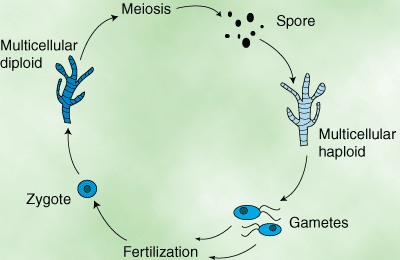Please wait while we process your payment
If you don't see it, please check your spam folder. Sometimes it can end up there.
If you don't see it, please check your spam folder. Sometimes it can end up there.
Please wait while we process your payment
Get instant, ad-free access to our grade-boosting study tools with a 7-day free trial!
Learn more



This site is protected by reCAPTCHA and the Google Privacy Policy and Terms of Service apply.
Create Account
Select Plan
Payment Info
Start 7-Day Free Trial!

Annual
2-49 accounts
$22.49/year + tax
50-99 accounts
$20.99/year + tax
Select Quantity
Price per seat
$29.99 $--.--
Subtotal
$-.--
Want 100 or more? Request a customized plan
You could save over 50%
by choosing an Annual Plan!

SAVE OVER 50%
compared to the monthly price!
| Focused-studying | ||
| PLUS Study Tools | ||
| AP® Test Prep PLUS | ||
| My PLUS Activity | ||
$22.49/month + tax
Save 25%
on 2-49 accounts
$20.99/month + tax
Save 30%
on 50-99 accounts
| Focused-studying | ||
| PLUS Study Tools | ||
| AP® Test Prep PLUS | ||
| My PLUS Activity | ||
No Fear provides access to Shakespeare for students who normally couldn’t (or wouldn’t) read his plays. It’s also a very useful tool when trying to explain Shakespeare’s wordplay!
Erika M.
I tutor high school students in a variety of subjects. Having access to the literature translations helps me to stay informed about the various assignments. Your summaries and translations are invaluable.
Kathy B.
Teaching Shakespeare to today's generation can be challenging. No Fear helps a ton with understanding the crux of the text.
Kay H.
No Fear provides access to Shakespeare for students who normally couldn’t (or wouldn’t) read his plays. It’s also a very useful tool when trying to explain Shakespeare’s wordplay!
Erika M.
I tutor high school students in a variety of subjects. Having access to the literature translations helps me to stay informed about the various assignments. Your summaries and translations are invaluable.
Kathy B.
Teaching Shakespeare to today's generation can be challenging. No Fear helps a ton with understanding the crux of the text.
Kay H.
Create Account
Select Plan
Payment Info
Start 7-Day Free Trial!
You will only be charged after the completion of the 7-day free trial.
If you cancel your account before the free trial is over, you will not be charged.
You will only be charged after the completion of the 7-day free trial. If you cancel your account before the free trial is over, you will not be charged.
Order Summary
Annual
7-day Free Trial
SparkNotes PLUS
$29.99 / year
Annual
Quantity
51
PLUS Group Discount
$29.99 $29.99 / seat
Tax
$0.00
SPARK25
-$1.25
25% Off
Total billed on Nov 7, 2024 after 7-day free trail
$29.99
Total billed
$0.00
Due Today
$0.00
Promo code
This is not a valid promo code
Card Details
By placing your order you agree to our terms of service and privacy policy.
By saving your payment information you allow SparkNotes to charge you for future payments in accordance with their terms.
Powered by stripe
Legal
Google pay.......



Please wait while we process your payment

Sorry, you must enter a valid email address
By entering an email, you agree to our privacy policy.
Please wait while we process your payment

Sorry, you must enter a valid email address
By entering an email, you agree to our privacy policy.
Please wait while we process your payment

Your PLUS subscription has expired
Please wait while we process your payment
Please wait while we process your payment

Algae
These algae are distinguished from other algae and higher plants by the type of chlorophyll they use. While most algae and plants use chlorophyll a and b, these algae use chlorophyll a and c, but not b. Most are unicellular or colonial, and they usually reproduce asexually. Yellow-brown algae are mostly freshwater dwellers, while diatoms live in both fresh- and saltwater. Brown algae are almost exclusively saltwater dwellers.
Diatoms are somewhat distinct from other algae in this group. Their cell walls are box-like, with a top and bottom that are fitted together. The cell walls have a high silica content, giving them a glassy appearance. The shells of dead diatoms are used in polishing products and detergents. What makes them truly different from other primitive plant-like organisms is that their non- reproductive cells are normally diploid rather than haploid.
All brown algae are all multicellular. In addition, they are the largest of the algae that possess chlorophyll c, growing to lengths of 45 meters or more. The thallus may be flat or three dimensional in structure, but none possess the complex internal tissues of higher plants.
Unlike green and red algae, brown algae the life cycle of brown algae includes
an alternation of generations.

The Euglenoids are the least algae-like of the algae. They are unicellular and motile, and they lack a key plant-like structure: the cell wall. For these reasons, they are often categorized as protests. Most euglenoids are photosynthetic, but some lack chlorophyll and are heterotrophic (requiring complex organic compounds of nitrogen and carbon for metabolic synthesis).
The structure of a typical euglenoid, Euglena is pictured below.

Please wait while we process your payment





